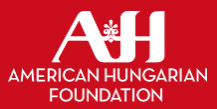Fraternity-Testvériség, 1990 (68. évfolyam, 1-4. szám)
1990-01-01 / 1. szám
. : Page 4 TESTVÉRISÉG of the church who served in the Spanish-American war in 1898, in World War I, in World War II, in the Korean War and in Vietnam. Through the sacrifices of those many brave young and old countrymen who gave their lives in the steelmills, coal mines or on the battle fields here and abroad, we can proudly claim 100 years in the history of this young country. The Pittsburgh church is a cradle of the American Hungarian church life, and we gratefully recognize that the first and decisive steps towards the forming of the HRFA and the purchase of the Bethlen Home were taken within the walls of that church. THE KOSSUTH HOUSE continues to be in an increasing way an important institution of the American Hungarian community in the Nation's Capital. Bishops, statesmen and an untold number of visitors from abroad pay homage to Kossuth, the champion of Hungarian democracy. For us it is equally important that many members of the Federation make it a point to stop by the Home Office when visiting D.C., some being 3rd and even 4th generation Hungarians. ON MARCH 15,1990, many church and community leaders met at the Kossuth House to discuss the establishment of an Organizing Committee to review the steps necessary to call into being a Hungarian American Congress to promote the aspirations, concerns and interests of the Hungarian American community in the United States and the future development of Hungarians throughout the world. Rev. László Tokés Sándor Bodo, sculptor of the Kossuth Placjue Following this meeting, more than 100 people' gathered at the Kossuth House for a wreath-placing ceremony at which we were honored by the presence of the Reverend László Tokes, the Hungarian human rights leader, who played a key role in the Romanian revolution. In the early afternoon, the festivities of this commemorative day continued at the Rotunda of the United States Capitol. The events of the day are now part of history and will be cherished by the American Hungarian community. The press gave this event good coverage, recognizing the national organization and individuals that had contributed to this important day. Unfortunately, there was no mention that the reception held in the Statuary Hall was jointly sponsored by the Human Rights Committee of Congressman Lantos and the two fraternal societies, the Hungarian Reformed Federation of American and the William Penn Association. It was a great honor and privilege to work together with all parties involved in this cause. Through the organizational guidance of Branch 300, the Home Office has become a favorite meeting place for discussions and presentation of documentary films—last but not least, the home of the Musica Hungarica, the local choir sponsored by the Federation. Imre Bertalan, President The full coverage on the 1990-Spring Meeting of the Board of Directors will be published in the 2nd issue of the Fraternity.
